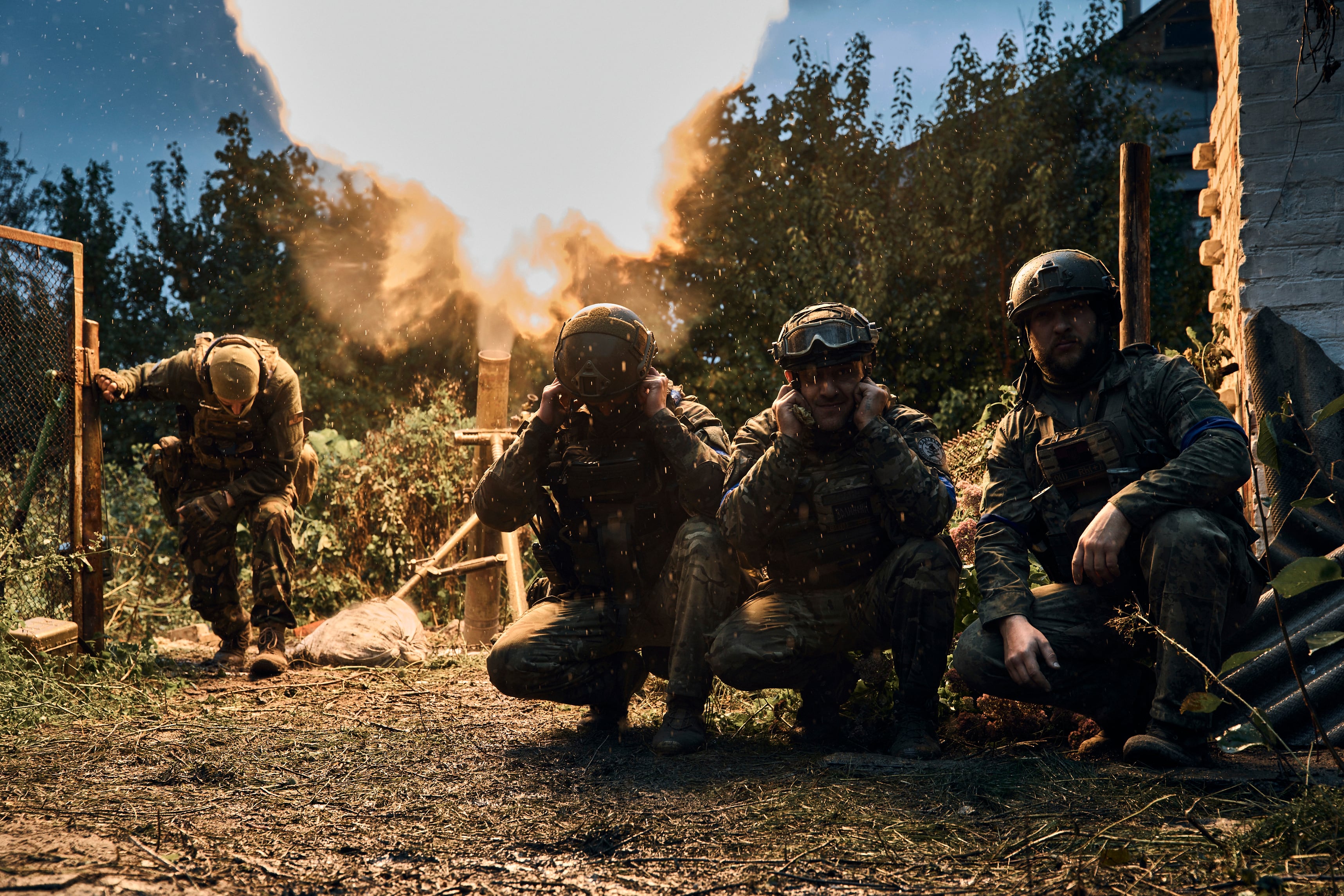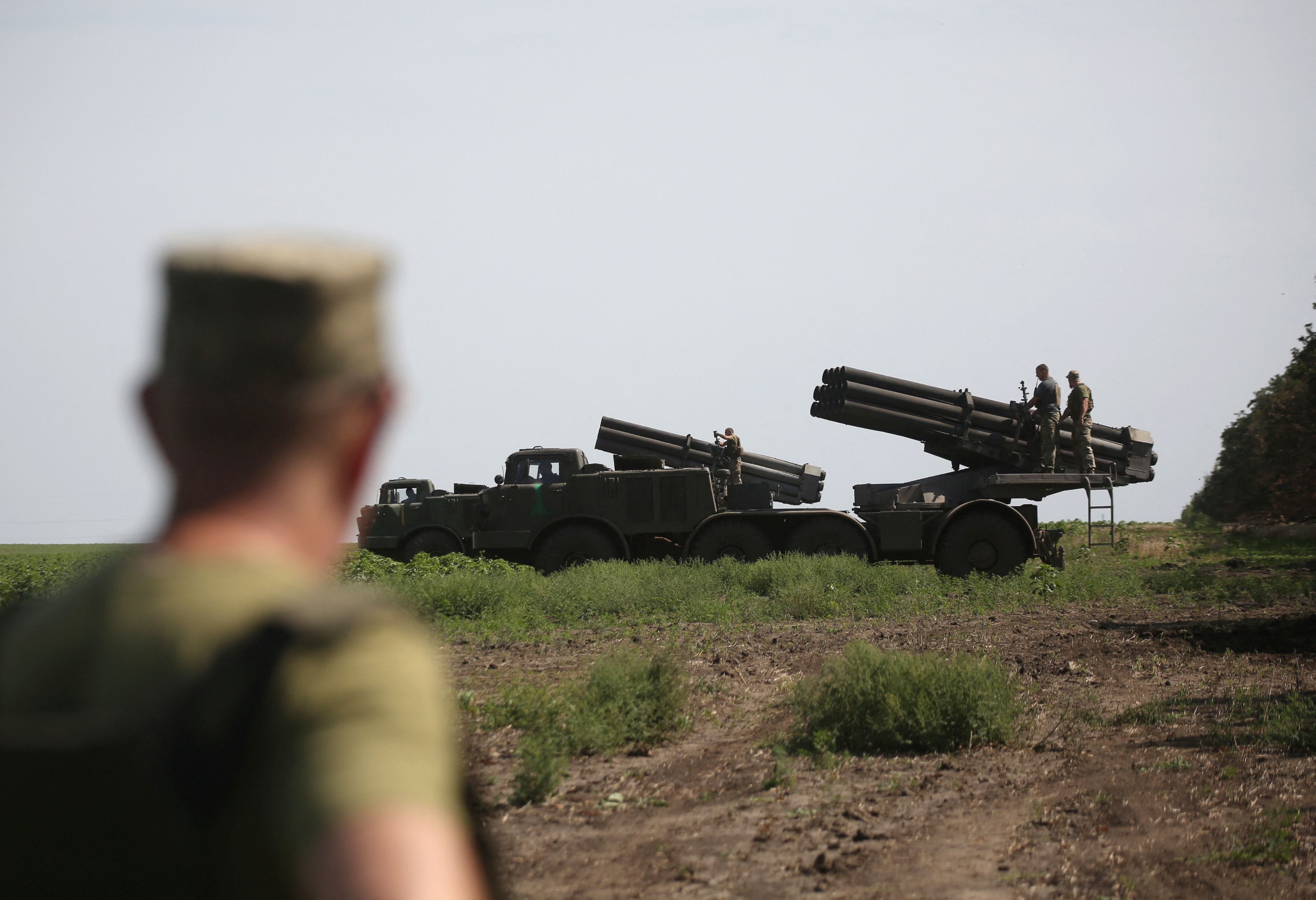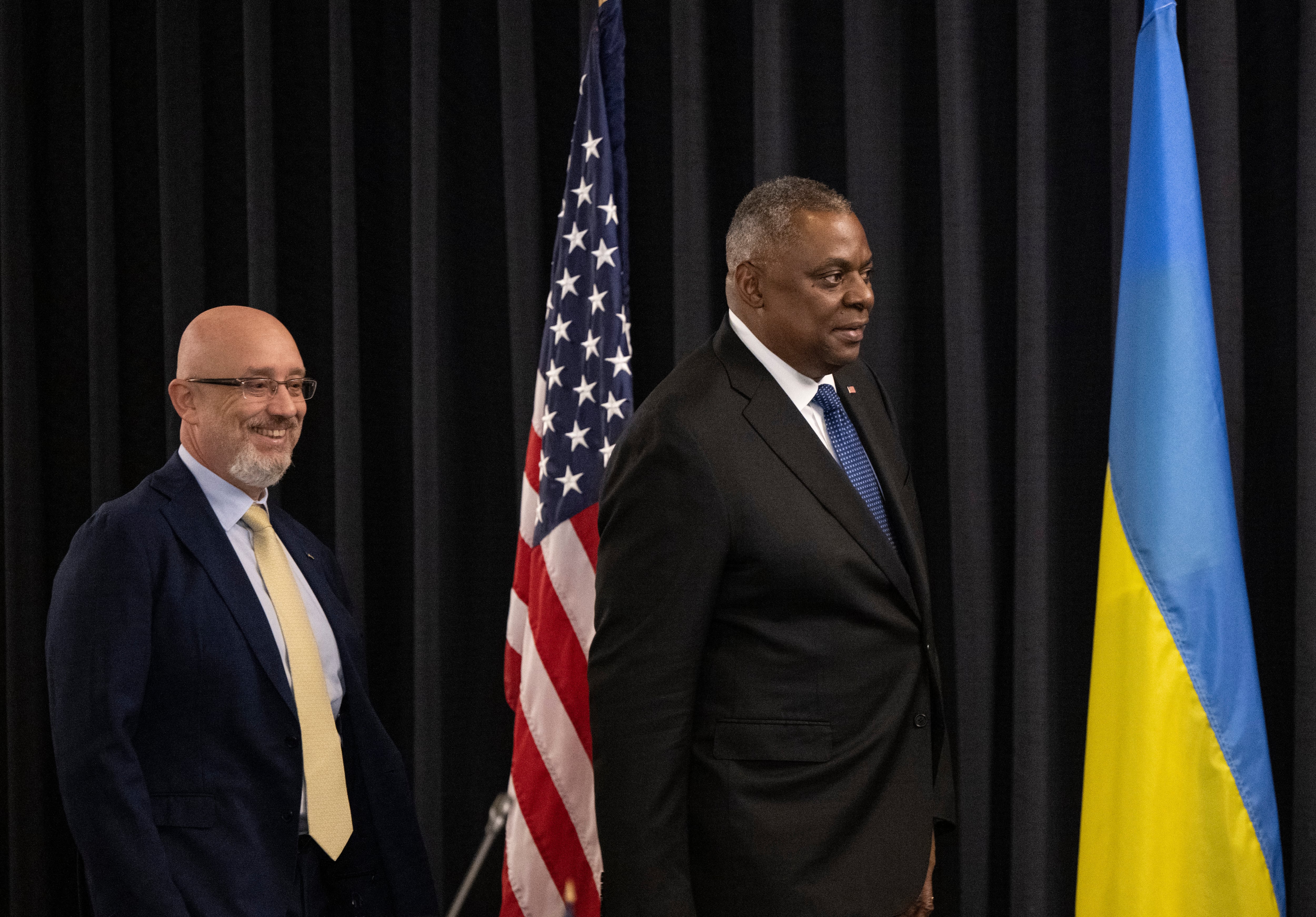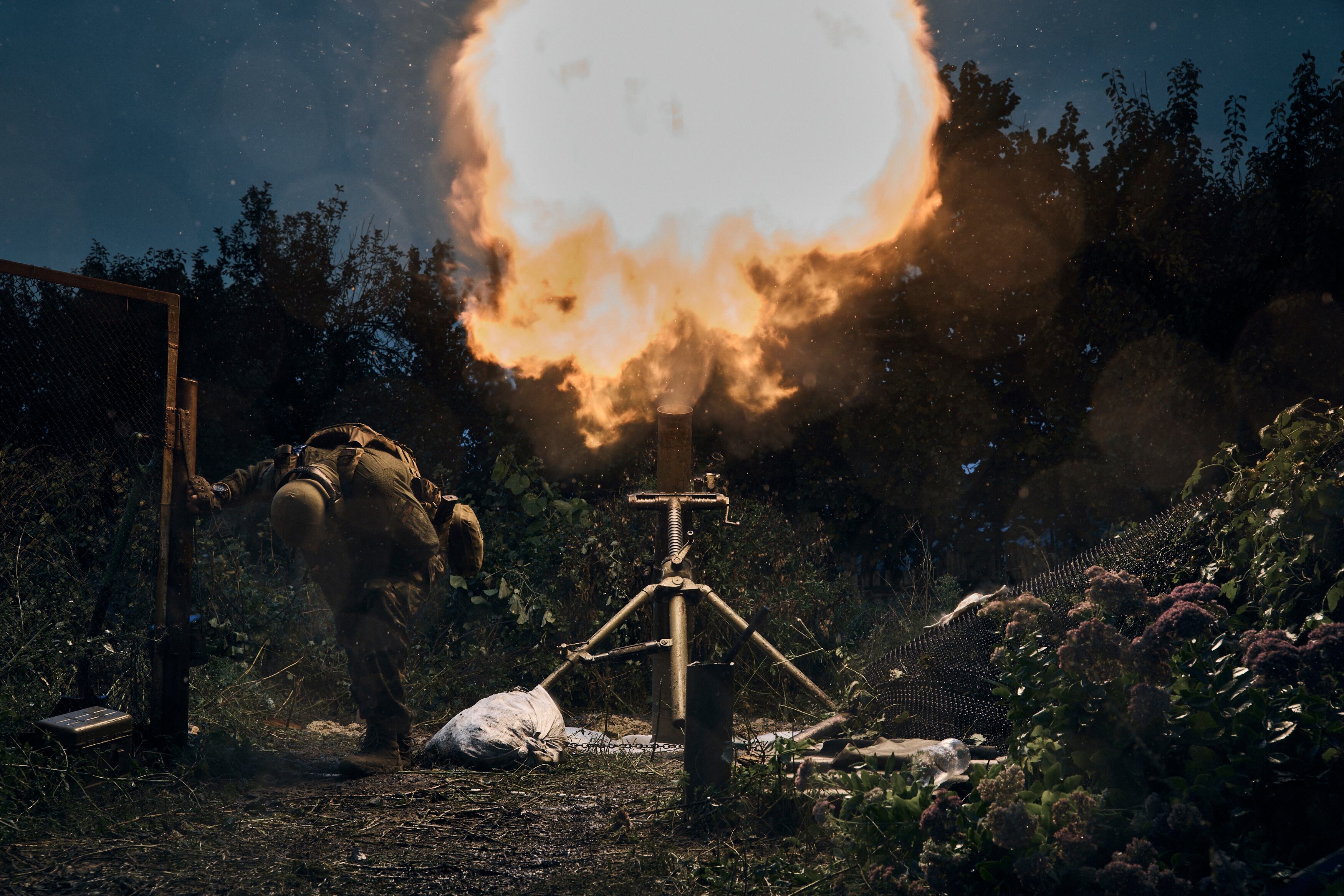WASHINGTON — Following Kyiv’s successful counteroffensive against Russia’s invading forces, U.S. defense officials say Ukrainians have found new ways to use a patchwork of donated weaponry more effectively.
The war has edged closer to a stalemate as it passes the seven-month mark. Faced with recent battlefield setbacks for his forces in Ukraine, Russian President Vladimir Putin has tried to raise the stakes by threatening to use the nuclear arsenal and calling up military reservists.
Ukrainian President Volodymyr Zelenskyy vowed Monday that the Ukrainian military will take back its “entire territory,” and has drawn up plans to counter “new types of weapons” used by Russia. He decried the Russian mobilization as nothing more than “an attempt to provide commanders on the ground with a constant stream of cannon fodder.”
With the mobilization, observers say Putin likely aims to stabilize his defensive lines and protract the conflict beyond 2023. Because Russia could assemble new formations by February, there’s a “need to reinforce success now by continuing to expand training and equipping of Ukrainian troops,” Jack Watling of the U.K.-based think tank Royal United Services Institute recently argued.
The comments come amid U.S. military assessments that Ukrainian forces have used a combined arms approach to great success. Gen. James Hecker, the head of U.S. Air Forces in Europe, told reporters Sept. 19 that Russia had lost more than 60 fighter jets in the war so far, nearly all of which were taken out by the Russian-made air defenses that Ukraine uses.
The U.S. believes one Russian aircraft crashed upon takeoff because of shoddy maintenance, and that another was shot down. Others were hit while sitting on the ground.
Hecker estimated that less than 20% of Ukrainian fighters have been destroyed, but did not provide more specifics about the size of the fleet.
Because neither side has established clear control of the skies, “they now stay away from one another and it ends up being a ground war,” he said.
RELATED

In lieu of supplying longer-range weapons and advanced American fighter jets, the U.S. is focusing on other kinds of support as the conflict enters a new phase. Russia’s Foreign Ministry said earlier this month that supplying longer-range weapons would cross a “red line,” and make the U.S. a party to the conflict.
“Put yourself in the position of the Secretary General of NATO or President Biden: You’re trying not to make this bigger than what it is right now,” Hecker said. “That’s a very difficult tightrope to walk down, to make sure that Ukraine has what they need to survive and fight and try to protect their sovereign country, without turning this into World War III.”
Defense contractors are toeing that line by equipping Ukrainian MiG-29 and Su-27 fighter aircraft with anti-radar missiles designed for more capable Western jets.
It typically takes the U.S. military a year or two to integrate new weapons onto a jet for the first time. In Ukraine’s case, the process took just a couple of months.
“When you take a Western HARM anti-radiation missile that’s designed for F-16s ... to put them on an Eastern Bloc MiG-29 or Su-27 is no easy feat,” Hecker said. “Is it as integrated as it is on an F-16? Of course not. So it doesn’t have all the capabilities that it would on an F-16. But we’re able to do it.”
RELATED

HARM missiles can pick up on anti-aircraft radar signatures to home in and destroy those systems. Introducing those weapons into the fight has forced Russian troops to temporarily turn off the radars altogether.
“If you get them to shut down their radars, then they can’t shoot down aircraft,” Hecker said. “Even though you don’t get a kinetic kill [of a radar], you get a kill by having them shut down. Then you get localized air superiority for a period of time, where you can do what you need to do, and then you leave.”
It’s one example of how combat tactics are evolving as the war carries on. Ukrainians and Russians alike have started moving their surface-to-air missiles every six to 12 hours, Hecker noted.
HARMs have given Ukrainian forces the ability to fly more close air support missions against moving targets inside Russian-held territory, either by destroying enemy anti-aircraft systems or during that brief pause while the radars are off, Hecker said. That approach can keep pilots safer as well.
To hit faraway static targets, the Ukrainians prefer using U.S.-made High Mobility Artillery Rocket Systems over sending in aircraft that could be shot down. Ukrainian forces have wielded HIMARS against Russian supply depots and artillery.
RELATED

HIMARS has become iconic in the fight against Russia, but the weapons aren’t effective without spotters to identify enemy targets, according to Mark Cancian, a senior international security adviser with the Center for Strategic and International Studies.
“It fires … so far beyond what front-line forward observers can see,” Cancian said of HIMARS. “It needs drones, which we’ve provided. It needs counter-artillery radar, which we’ve provided, and also overhead surveillance, which we are also likely providing.”
Still, Cancian argues that HIMARS isn’t the silver bullet it’s made out to be. Instead, he credits cannon artillery as “the main killer on the battlefield.” The U.S. has provided Ukraine with hundreds of conventional artillery guns and hundreds of thousands of rounds for them to fire.
“Artillery can fire at long ranges, it can fire a lot [and] it can inflict a lot of damage, particularly as armies become locked in positional combat,” Cancian said. “When they’re moving, it’s harder for the artillery to catch up. But when the front line stabilizes, as it’s done in the last four months, artillery really comes into its own.”
At first, Ukraine was shelling the Russians with 155 mm howitzer rounds that aren’t as accurate as HIMARS, Hecker said. That system’s arrival has offered much better targeting capabilities, so Ukrainian troops can more effectively act on the coordinates passed on by the U.S.
RELATED

Still, Russian forces have adapted and learned to keep its forces on the move, Hecker said.
“We were able to take out their command-and-control command posts, and some of their weapons storage areas. It was a lot easier,” Hecker said.
U.S. and NATO officials are betting that the intelligence supplied to Ukrainian troops will continue to strengthen their hand.
While Western officials haven’t publicly acknowledged the full extent of that aid, the New York Times reported that the U.S. has provided Ukraine with information on command posts, ammunition depots and other key Russian nodes. Such real-time intelligence has reportedly allowed the Ukrainians to target Russian forces, kill senior generals and force ammunition supplies to be moved farther from the Russian front lines.
At the beginning of the war, the U.S. would alert Ukraine whenever cruise missiles were incoming, according to Hecker. Alarms would sound nationwide and Ukrainians would hunker down wherever they could find protection.
“Obviously, this happened a lot, so they weren’t able to fight the war,” he said. “As we matured through this, we could give them a better idea of where it might be going.”
RELATED
That progressed to updating Ukraine on the location of Russian equipment.
“We would not say, ‘Here’s the target for this, go target these things.’ We would just give them the intelligence. Let them decide if they wanted to target it,” Hecker said.
“The whole counteroffensive was their idea … where it was going to occur and when it was going to occur,” he added.
Adding to that intel-sharing enterprise, Air Force Special Operations Command has started creating teams within each wing that combine more traditional ground warfare with those of intelligence, cyber, space and information ops.
“That synergy can take place … at a tactical level, solving problems that are much more locally focused,” AFSOC commander Lt. Gen. Jim Slife said Sept. 7. “Our first one of those is being established in [Europe] right now. Some of the initial challenges that they’re working on, inside that part of the world — really, some pretty impressive work coming out of that organization.”
Air Combat Command boss Gen. Mark Kelly called the work of Air Force cyber and intelligence units in Europe “their finest moment.” The service did not provide more details on their missions by press time Tuesday.
RELATED

In the meantime, Ukraine continues to press its Western backers for munitions that can fly farther and target more precisely.
For now, it appears the U.S. and NATO will stick to its rule of withholding weaponry that offers longer range than 50 miles, or 80 kilometers, Hecker said. The allies continue to provide firepower on the condition that Ukraine doesn’t use those munitions to target Russian territory.
“Most of what’s been happening so far has been about immediate needs, and about the fights that they’re engaged in right now and what can be done relatively quickly to help them,” Air Force Secretary Frank Kendall said Sept. 19.
There is no plan to quickly provide fighter jets to Ukraine, Kendall said. When it comes to rebuilding the country’s future force in the long term, though, the U.S. will look at how it could contribute.
The Pentagon is now focused on building an allied force of air, land and sea assets that connect with those of NATO countries. It’s unclear whether it would take the same approach with Ukraine, which has not been accepted into the transatlantic military alliance.
“There are options that we’ll consider based on their needs, and we’ll have those conversations at the right time,” Kendall said.
That time may not come soon, as challenging winter weather looms and Ukraine digs in for the long haul.
Kendall said Russian troops are “suffering some setbacks” but “show no signs of fundamental change” amid this month’s counteroffensive.
“It’s kind of like COVID, right? We all thought it was going to be done in a couple of months, and here we are,” Hecker added. “I think we’re probably looking at years.”
Rachel Cohen is the editor of Air Force Times. She joined the publication as its senior reporter in March 2021. Her work has appeared in the Washington Post, the Frederick News-Post (Md.), Air and Space Forces Magazine, Inside Defense, Inside Health Policy and elsewhere.
Joe Gould was the senior Pentagon reporter for Defense News, covering the intersection of national security policy, politics and the defense industry. He had previously served as Congress reporter.









